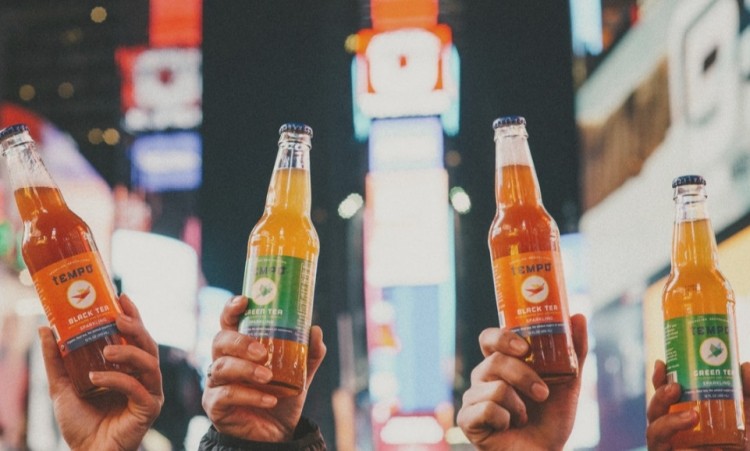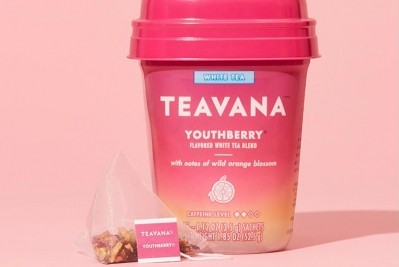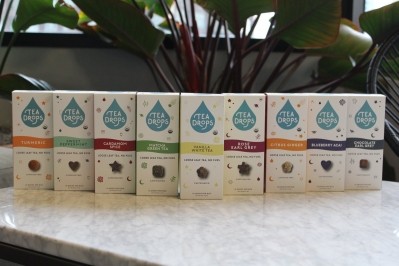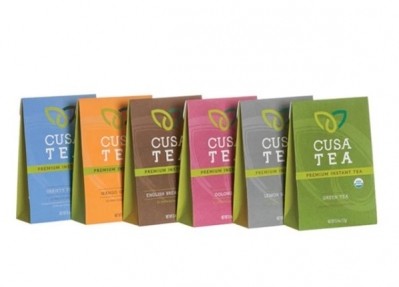Tempo uses ‘micro-dosing’ to deliver more benefits with less caffeine

“There are two ways you do caffeine,” Tempo co-founder Austin Gallagher explained to FoodNavigator-USA. “You can crank a Red Bull or crank an espresso shot and get about 150 to 180 mg of caffeine at once and get a jolt and then crash down pretty rapidly. Or, you can have 20 mg to 60 mg of caffeine and have a little wave of energy, instead of the big tsunami, and, according to the literature and experts … that actually improves cognitive function, alertness and reaction speed over time,” and you avoid the crash all together.
Laid out that way, it was clear to Gallagher and his co-founder Ryan Crane that micro-dosing was the better way to reap the benefits of caffeine. The only problem was after decades of caffeine being marketed in the US as more is better, there were no ready-to-drink beverages with micro-doses available on the market -- until now.
“It is like a caffeine arms race right now and it is just more and more and more, but you can’t just overload your system and keep throwing more in there and think it will give you a better cognitive performance. That is not how the brain works and that is not how the body works,” which is why so many people suffer from jitters if they have too much caffeine, Crane explained.
“So, what we are trying to do is deliver a more effective solution,” he said. “We want to deliver the right amount of caffeine, in the proper dosage, that is absorbed the right way, and then you can actually go about your day being productive and get what you need to get done.”
The duo is doing this with its Tempo Sparkling Tea: A line of unsweetened, organic, sparkling teas designed to provide people with a healthy, refreshing and clean boost of energy, which comes in two options. The first is a “revitalizing and mellow” green tea with ginger, turmeric and 30 mg of caffeine per serving, and the second is a “bold and uplifting” black tea with ginseng, grapefruit, “notes of black pepper” and 40 mg of caffeine per serving, according to the company’s website.
While “you can get caffeine from a ton of different sources,” Crane explained that tea is “the secret weapon” in their beverages because research shows that it not only delivers a micro-dose of caffeine, but slows down the body’s absorption of caffeine to about half the rate of coffee.
“Getting the proper amount of caffeine is only one part. The other is you want to absorb it at the right rate, and other compounds in tea, such as l-theanine and antioxidants, together slow that absorption rate,” Crane explained.
Gallagher recognized that the idea of a beverage with less caffeine and a slower absorption rate “may sound counter-intuitive based on the marketing that we see behind caffeine a lot, but the studies show that administering a really low dose of caffeine every two hours … can give you the desired productivity boost throughout the day.”
That doesn’t mean consumers need to drink Tempo every two hours – but the low levels of caffeine do mean that people can drink it at more times of day than they might feel comfortable with other higher-caffeine options – “allowing them to choose their own adventure, and own tempo for their day,” Crane said.
The addition of carbonation also adds to the beverages appeal as an early afternoon option that might previously have been met with a soda, Gallagher said.
“We see the sparkling component as making Tempo a more sophisticated, more flavorful option than La Croix, but less sugary than a non-alcoholic version of kombucha,” he added.
Targeting ‘aspirational professionals’
The idea for Tempo came out of the early days of Crane’s career when he would log long hours at his desk as an aspiring young professional and inevitably hit a slump at 2 or 3 pm, which for him was too late for another cup of coffee. At the same time, he said, a sugary soda didn’t sounds appealing either.
Staying close to these roots, the team sees Tempo as a drink for “aspiring professionals who want to make sure they are putting the right fuel in the tank for the bodies and are looking away from traditional old-world sodas,” Gallagher said.
He explained, “The new generation of food and beverage consumers are very savvy about what they put in their bodies. They are reading labels. They understand the health benefits. They understand artificial sweeteners, calorie content and what is not great for the body. And those are the people who will find Tempo” to be a natural fit.
That said, the beverage also likely will appeal to teenagers and older consumers – both of whom also likely need a mid-day boost on occasion, he added.
To help reach its target consumers, the young company has focused primarily on face-to-face communications through store demonstrations, but also reaches out through social media.
“We believe in building an impactful digital campaign, but the thing we have learned is that in order to know your consumers, what is working and what isn’t, and to get the product off the shelf, you need to be on the streets,” Gallagher said, adding, “you can have a great product, but it won’t sell itself.”
Growing from food service to omnichannel
The beverage has gained the most traction so far in coffee shops, cafes and food service where consumers often are more open to trying something new, he added.
As those sales continue to grow, the company hopes to push out into bigger retail chains and even increase its ecommerce presence, Gallagher said. He added that as the company explores online sales, it also is exploring new packaging options that are lighter than the current glass bottles.
However, he noted, Tempo will never be in plastic bottles given the damage they are causing to the ocean and the company’s dedication to sustainability and the ocean conservation work done by Beneath the Waves – a non-profit dedicated to saving sharks through research.
The company also has plans to launch new products before the end of the summer, including a matcha product that the team is “putting the finishing touches on now,” Crane said. Other future options could include herbal teas and more green and black tea options, he added.


















